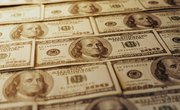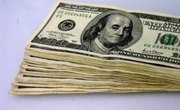If you have $75 that you use to buy one item, such as headphones or a backpack, the $75 is your consumer buying power. If you have $150 that will buy one set of headphones and one backpack, you have $150 in consumer purchasing power. In both instances, the value of money can be illustrated using the products you can or do buy with the money.
Consumer Buying Power
If you have cash or other financial resources, or if you have the ability to get credit, you have consumer buying power. The price tags a store places on its products that tell you how much of your cash you must give to the store in exchange for the product indicates your purchasing power. The quantity or the portion of a product of a particular quality that you can purchase today with $1 is the current value of the dollar.
Consumer Buying Power and Inflation
Consumer buying power changes from time to time due to inflation or deflation, changes in wages, and the value of currency. As a consumer, or someone who buys goods for personal use, you will be able to purchase more with the same amount of money in a noninflationary period than in an inflationary period. This is because the prices of the things you buy will rise in a period of inflation. Because of higher prices, you will buy fewer goods, and the types of goods you buy may change. For example, the majority of your cash may be spent on necessities, such as food and clothing, rather than on luxury items. Later, if wages increase but prices remain stable, you may have the money to buy necessities and luxury items.
Consumer Price Index
The consumer price index reflects the price changes for all goods and services that are purchased by individual households, which represent different segments of the labor force, such as professionals, managers, retirees and the self-employed. According to the Bureau of Labor Statistics, the prices used to calculate the index are collected for products sold through the country. By stating changes in prices of goods and services, the index suggests a change in the value of $1 and a change in the consumer’s buying power. Businesses use consumer price index data to make economic decisions, including product pricing, hiring, purchasing and production decisions.
Manufacturing and Consumer Buying Power
To be profitable, a manufacturer must produce goods that consumers want to buy and can afford based on their disposable income. For this reason, the manufacturer must know the buying power of consumers in different markets to know what products to produce and where to distribute the products. For instance, a manufacturer might produce polyester coats that will sell for $40 in a market of consumers who earn $45,000 a year. The same manufacturer might produce wool coats that will sell for $200 in a market of consumers who earn $80,000 per year. By designing two different products to meet the needs of two different consumer groups, the manufacturer has created a marketing and distribution plan based on the consumers’ buying power. In doing so, the manufacturer is more likely to produce products at a reasonable cost and earn a profit on each product sold.
Related Articles
References
Writer Bio
Billie Nordmeyer works as a consultant advising small businesses and Fortune 500 companies on performance improvement initiatives, as well as SAP software selection and implementation. During her career, she has published business and technology-based articles and texts. Nordmeyer holds a Bachelor of Science in accounting, a Master of Arts in international management and a Master of Business Administration in finance.









